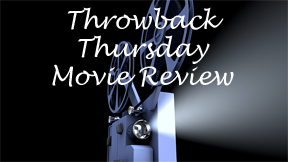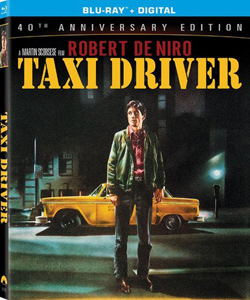The Oscar-nominated “Joker” has brought a key question about art front and center, perhaps most prominently since the early part of this century when sample-laden songs started to become radio hits. Where is the line that separates homages from ripoffs? Inspiration from theft? Two Martin Scorsese films are regularly mentioned as the most obvious forbearers to Todd Phillips’ “Joker”: “Taxi Driver” (1976) and “The King of Comedy” (1982). I’ll look at “Taxi Driver” here.
Mentally unstable New Yorkers
Travis Bickle (a young, outstanding Robert De Niro) and Arthur Fleck/Joker (a top-of-his-game Joaquin Phoenix) are both mentally unstable people living in New York/Gotham between 1976 and ’81. But “Joker” is the mainstream answer to “Taxi Driver’s” arthouse sensibilities. Bickle’s transformation into a killer who thinks he is doing good is gradual; by the very nature of the Joker already being a pop-culture staple, we know what he’s gonna become.
Written by Paul Schrader, “Taxi Driver” is a postcard of 1976 New York City, featuring steam coming up from manholes and blurry city lights wherever you look. An admitted lonely man (via his voiceovers), Bickle at first is an observer of what he sees as the filth and scum of the Earth, and it’s hard to argue with him. Among the things he sees are prostitution of a 12-year-old and a convenience-store holdup.

“Taxi Driver” (1976)
Director: Martin Scorsese
Writer: Paul Schrader
Stars: Robert De Niro, Jodie Foster, Cybill Shepherd
Scorsese is from the Big Apple, but “Taxi Driver” is not a love letter to the city. Although it is cinematically beautiful under the lens of Michael Chapman, there’s hardly a moment that suggests it’s a nice place to be.
Travis decides in one of his voiceovers that he should become a person rather than merely observing, and thus we have the plot: He buys a bunch of guns and then – after the famous “You lookin’ at me?” practice session — uses them on the members of the prostitution ring holding Iris (Jodie Foster, the most worldly 13-year-old actress ever). One of his cabbie buddies suggests getting a gun for protection; Fleck receives the same offer.
While “Joker” may be the blunter picture overall, “Taxi Driver” more clearly presents its events as being in Travis’ head – but not until the very end. After a long montage showing the aftermath of Bickle’s killings, along with the police arriving on the scene and cornering Bickle – who fails to kill himself because he has run out of bullets – we make a short time jump to Bickle as a free man.
From a certain point of view
The camera pans across newspaper stories calling him a hero as we hear a voiceover of Iris’ dad thanking Travis for saving his daughter. Then Travis is back at his cabbie job – and back with his pre-mohawk, normal haircut – driving around Cybill Shepherd’s Betsy. She had rejected him earlier in the film but now is comfortable around him during the cab ride.

This paints “Taxi Driver’s” major events as being in Travis’ head, although it’s hard to say at what point the film switches from reality to imagination. “Joker” has obvious “all in his head” sequences – notably Arthur imagining that his beautiful neighbor likes him – but the question of whether all of “Joker” is is in his head is hotly debated.
“Joker’s” ending is similar to “Taxi Driver’s” in that it skips over a part of the narrative that should be self-evident: Arthur’s arrest and subsequent incarceration in a mental hospital. This could be a case of skipping ahead for the sake of judicious use of time. Or, more interestingly, it could be that we’re entering reality for the first time in the film: Arthur has always been in the psych ward — or he had been since a certain point much earlier in the narrative.
As noted, Travis’ progression from observer to killer is gradual (even though the plot can be quickly described), and it’s also more subtle than Arthur’s. The score by “Psycho’s” Bernard Herrmann, one of the last of his lifetime, does more to communicate the mounting tension than anything else. The tension is inside Bickle until the point where he lets it loose for everyone else to experience.
A natural transformation
De Niro can go over-the-top when he wants to, but thankfully he does not in this iconic role: Bickle’s transformation is totally natural. He’s charming when asking political campaign activist Betsy out on a date. Later, he’s terrifying when he plays vigilante. (As a viewer, we are charmed, but we are not terrified. Travis is on our side.)
Like “Joker,” “Taxi Driver” presents a killer as a hero and fails to undercut that portrayal with suggestions that he’s not really a hero. “Taxi Driver” is the better picture because it came first, and also because Bickle only kills bad people. As such, we can’t undercut the question of his heroism with “Well, he also killed innocent people.” There’s less of an escape from “Taxi Driver.” It’s totally on the audience to say “It’s not right that he killed those people.” Or to not say it.
My view is that “Taxi Driver” and “Joker” are companion pieces, not an original followed by a ripoff. That said, there’s no question that “Joker” shares DNA with “Taxi Driver.” So it’s ironic that, at the Oscars, Scorsese’s “The Irishman” is going up against a movie that would not exist if he hadn’t made “Taxi Driver.”

